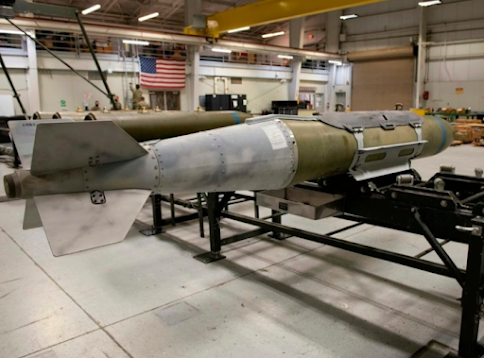MQ-25: Not just a drone, but a revolution on deck
In 2026, the US Navy will take a step that has been dreamed of for decades: an unmanned MQ-25 Stingray tanker aircraft will take off from the deck of an aircraft carrier for the first time. This is not just a technical achievement, it is a paradigm shift. Now aerial refueling, previously entrusted to combat fighters, will pass into the hands of an autonomous vehicle. And it will change everything.
The MQ-25, created by Boeing, is designed specifically for the harsh conditions of deck operations. It will be able to carry up to 6.8 tons of fuel and refuel several aircraft in one flight.
Super Hornet is no longer a tanker
Currently, almost a third of F/A-18E/F Super Hornet sorties on an aircraft carrier are not combat missions, but refueling missions. The fighter itself, designed for combat, is forced to carry fuel so that other vehicles can reach the target. This is a huge loss of combat power.
With the advent of the MQ-25, these functions will be removed from the Super Hornet. Now it will be able to take off with combat weapons, and not with external tanks. Every fighter jet is a strike, not a fuel tanker.
How does this change the combat capabilities of an aircraft carrier
Imagine: an aircraft carrier wing can launch more fighters, they fly further, stay in the air longer and return to refuel more often. The MQ-25 will be waiting for them at a given point, like a flying gas station.
This means that the range of the aircraft carrier will grow without a single change in its design. And this is a strategic advantage, especially in areas with dense air defenses, where every kilometer counts.
The path to full autonomy in the air
The MQ-25 is not the end, but the beginning. This is the first drone to become part of the deck loop. It will show that autonomous systems can operate in the most difficult conditions — on a swinging deck, in cramped hangars, in rain and storms.
In the future, such drones may take over not only refueling, but also reconnaissance, electronic warfare, and even strike missions. The aircraft carrier will become a hub for autonomous systems, not just a base for manned aircraft.
Sources on the MQ-25 Stingray carrier-based tanker drone and its 2026 entry into service
- UNIAN — the first serial MQ-25 is scheduled to fly in 2025, with carrier integration expected in 2026. It will be the world’s first operational carrier-based tanker UAV, able to refuel combat aircraft at long range.
- Hi-Tech Mail.ru — factory tests of the latest MQ-25 Stingray are underway in the U.S.; the U.S. Navy plans to begin operating the drone from carriers in 2026 to extend the range and endurance of carrier aviation.
- Central Asia News — the MQ-25 Stingray will boost U.S. naval aviation by providing aerial refueling, ISR (intelligence, surveillance & reconnaissance), and data collection. Full operational capability is expected in the 2030s.
- RuPosters — the U.S. Navy intends to acquire 76 MQ-25 drones; the first serial aircraft should be delivered in 2026. The program has seen some delays, but development is on track.
- ArmIya.az — U.S. Naval Air Forces commander Vice Admiral Daniel Cheever stated that the MQ-25 will fly in 2025 and begin carrier operations the following year.




































.jpg)
